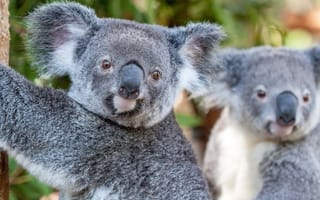
Habitat loss is one of the greatest threats to koalas and now researchers at QUT have an innovative method to keep track of these icons of Australian wildlife, according to a report from EurekAlert!.
The outlet reports that these researchers recently published a study in Scientific Reports explaining how their team used an algorithm to locate koalas using drones with infrared imaging.
Compared to traditional animal population monitoring techniques, this technique is more reliable and less invasive. EurekAlert! notes that the system may someday improve management of koala populations and other threatened species as well as detect invasive species.
Co-authoring this study were Dr. Grant Hamilton, from QUT's School of Earth, Environmental and Biological Sciences, PhD student Evangeline Corcoran and Dr. Simon Denman from QUT, and John Hanger and Bree Wilson from Endeavour Veterinary Ecology
Dr. Hamilton described how the researchers were able to correlate the detection of koalas from above and track radio-collared koalas in Petrie, Queensland using infrared imaging to spot koalas that the canopy coverage of the eucalyptus trees would otherwise hide.
"Nobody else has really managed to get good results anywhere in the world in a habitat this complex and in these kinds of numbers. This is not just somebody counting animals with a drone, we've managed to do it in a very complex environment."
"Nobody else has really managed to get good results anywhere in the world in a habitat this complex and in these kinds of numbers," Dr. Hamilton said to EurekAlert!. Dr. Hamilton underscored the relative complexity as what makes this different than a simpler survey such as looking for seals on a beach.
"This is not just somebody counting animals with a drone, we've managed to do it in a very complex environment."
Other advantages of this system include accuracy (86 percent compared to that of an expert koala spotter at 70 percent) as well as efficiency.
"We cover in a couple of hours what it would take a human all day to do," Dr. Hamilton said to the outlet, although he stopped short of saying one method of detection should replace the other.
"There's no point talking about it that way, because there are places that people can't go and there are places that drones can’t go," he said, calling drones “a powerful technique in the right circumstances."
Plans for the research include an expansion of area coverage as well as expanding the target for the algorithm to detect invasive species such as deer, the outlet reports.






